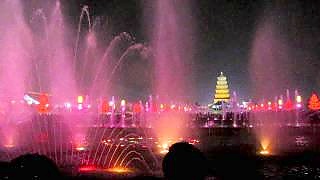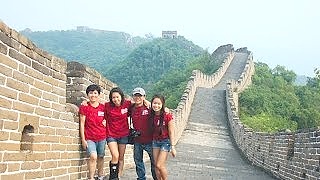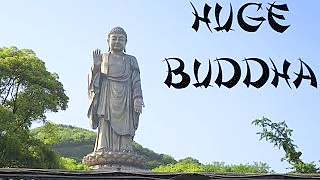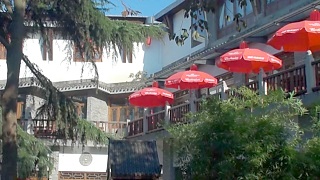There are a number of materials invented by the Chinese which became a key part of Chinese culture and are highly regarded.
Bronze
The use of bronze, an alloy based on copper and tin, that was tough and could be cast into many different shapes and sizes, has a history of over 4,000 years. Over time methods for elaborate decoration of bronze items were developed, including the inlay of other metals and jade. Besides various kinds of pot, some huge, bronze was also used for swords and mirrors and other artifacts.
Lacquer
Lacquer is sap from the lacquer tree. This remarkable material is very light but tough once dried - mechanically and chemically, able to resist strong acids or alkalis. Its use dates back an amazing 6,000 years. Early lacquerware was black and red and remains a popular combination. By the Han dynasty (206 BC - 220 AD), decorative techniques had been mastered and lacquerware was used widely for both commonplace implements such as bowls and also ornamental items.
Porcelain
By the time Europe learned the secret of making porcelain in 1709, Chinese artisans had been producing it for over one thousand years. First, scientists studied and learned the properties of silicate glazes. The potter's wheel was invented to shape the clay. High-temperature kilns were constructed to fuse the glazed clay into porcelain.
Porcelain is made from coal dust and a type of fine, white clay called kaolin. It is baked at 1200 degrees Centigrade but but ordinary ceramics are baked at 500 degrees Centigrade. The mineral cobalt is added to create blur porcelain.
Silk
Silk comes from the cocoon made by the silkworm, an insect that likes to make its cocoons on mulberry bushes. Silk has been produced in China for over 5,000 years and was kept secret for over 3,000 years, making a great trade item. In 552 A.D., Emperor Justinian sent two monks on a secret mission to Asia; they returned to Byzantium with silkworm eggs hidden inside their bamboo walking sticks. This was the earliest known example of industrial espionage!. From then, sericulture spread throughout Asia Minor and Greece.
It takes forty-thousand silkworms to make just five and a half kilograms of silk! Silk is cool in warm weather and warm in cold weather.
The threads from several cocoons are subsequently unwound together to form a single strand of raw silk. This fine thread is the basic component of all Silk yarn and fabric. Because the threads are naturally long, silk is, weight for weight, stronger than steel in tension.
The Chinese also invented forms of embroidery, for weaving textiles such as satin, damask, gauze, and brocade. In the second century AD, the Chinese invented a drawloom. Nearly as high as a two-story building, the drawloom made large-scale production of brocade possible.
Jade
Jade is a quality stone with fine texture, elegant luster and slick surface. It can be divided into soft jade and hard jade. There are a number of color variations and quality can vary enormously, based mainly on optical properties. Translucent emerald-green jade is one of the most prized varieties, both now and historically. Even cheap jade, which technically might not be jade at all but another mineral with similar look and feel, has a nice feel to it with a lot of its value coming from the way it has been carved and polished.
To the Chinese, jade is the most prized mineral, even if it is less expensive than gold or diamond. Jade is felt to be more 'alive' and is associated with merit, morality, dignity and grace.
This gem, with its discreet yet rather greasy lustre, which comes in many fine nuances of green, but also in shades of white, grey, black, yellow, and orange and in delicate violet tones, has been known to Man for some 7000 years. In prehistoric times, however, it was esteemed rather more for its toughness, which made it an ideal material for weapons and tools. Yet as early as 3000 B.C. jade was known in China as 'yu', the 'royal gem'.
In the long history of the art and culture of the enormous Chinese empire, jade has always had a very special significance, roughly comparable with that of gold and diamonds in the West. Jade was used not only for the finest objects and cult figures, but also in grave furnishings for high-ranking members of the imperial family.
Today, too, this gem is regarded as a symbol of the good, the beautiful and the precious. It embodies the Confucian virtues of wisdom, justice, compassion, modesty and courage.






 Notable Chinese Materials (silk, porcelain, lacquer, jade)
Notable Chinese Materials (silk, porcelain, lacquer, jade)






